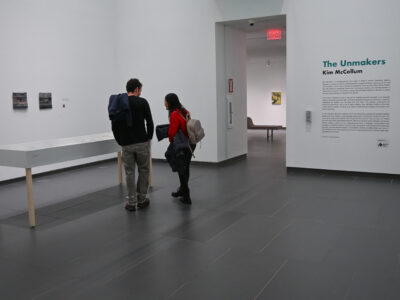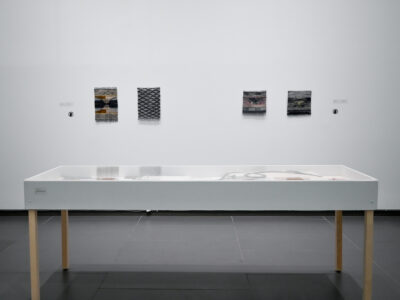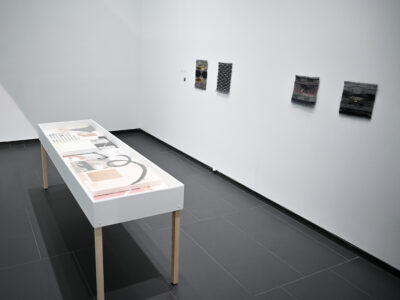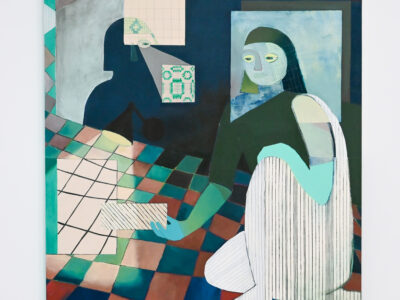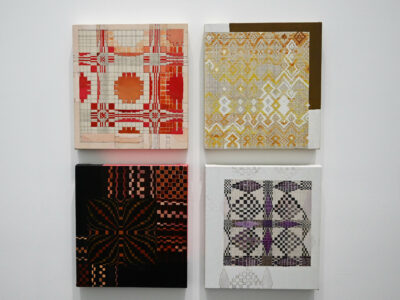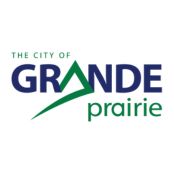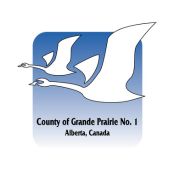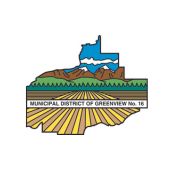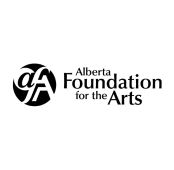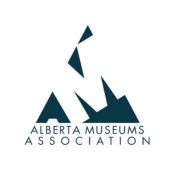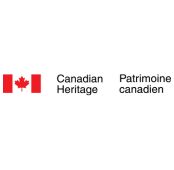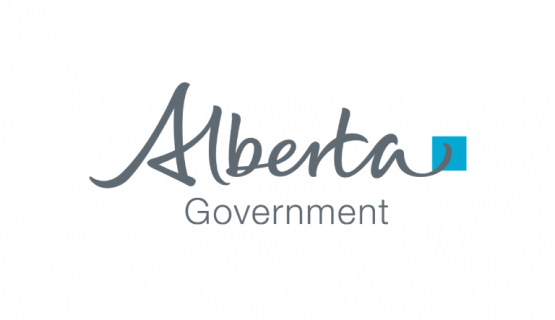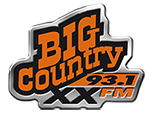Kim McCollum

The Unmakers
Kim McCollum
February 29, 2024 - June 30, 2024
Kim McCollum is a multidisciplinary artist based in Treaty 6 territory (Edmonton, Alberta). Working in a variety of mediums, including painting, collage and textiles, weaving is at the heart of her practice. In 2019, she co-founded a collaborative weaving studio called Gather Textiles, and has created a remarkable community, emphasising teaching and learning between a diverse pool of makers. The generous energy and exchange fostered by McCollum’s shared weaving studio influences all aspects of her practice.
At the core of McCollum’s work is the grid: an essential structure prevalent in our everyday world. At first glance, the grid is a symbol of order, used to plot, map, build and hold things together. A defining icon of western 20th century Modernism, the grid is fundamental to movements such as Cubism, de Stijl, Constructivism and Minimalism. However, beyond the facade of order, the grid is also a curious contradiction, capable of transcending its own logic. As art critic Rosalind Krauss put it, “The grid’s mythic power is that it makes us able to think we are dealing with materialism (or sometimes science, or logic) while at the same time it provides us with a release into belief (or illusion, or fiction).”¹
In McCollum’s work, she begins with the grid, or the idea of the grid. In earlier paintings from 2021, she uses it to reference the warp and weft of threads– the basis of weaving cloth. In this work, each stitch is represented by a painted square, the resulting compositions are meticulous abstractions, with a nod to textile patterns. By exaggerating such intricacies, McCollum sheds a light on the skill, discipline and time that weaving requires, which goes largely unnoticed, unseen. Elevating tiny stitches to the cannon of abstract painting is a power-move, drawing attention to the importance of invisible labour traditionally performed by women in society, such as childcare, cleaning, mending and emotional intelligence. Such tasks, and more, are still culturally understood as women’s work, and remain largely undervalued. This fact is perhaps most simply illustrated by the global gender pay gap. Locally it is currently 67¢ (earned by women) to every dollar (earned by men) in Grande Prairie.²
In The Unmakers, McCollum continues her investigation of the grid, this time pushing its narrative capacity. Building from her weaving-based abstractions, she blithely disrupts the grid. The new body of work presents figures who emerge from this structure. They are busy (un) making their own world. The grid works for them as opposed to the other way around. In Grid Maker and Grid Makers II the figures appear to be blowing bubbles, expanding and warping the grid like balloons. Through this practice, it could be imagined that they are exchanging information, as though the bubbles are a means of communication, a new language.
With play and confidence, McCollum presents a kind of woven fiction, revealing aspects of the creative process. Like Walter Womacka’s socialist mosaic Unser Leben (Our Life) 1964, which wraps around the building Haus des Lehrers (House of the Teacher) in former East Berlin, McCollum’s figures diligently depict the construction of their imagined realities. In Unser Leben, a wide range of citizens joyfully go about their business, from scientists to students to artists, the mural idealises everyday life and work. In McCollum’s pieces, hands are frozen mid-gesture, holding fragments of patterned swatches. Eyes are squinted sharply in concentration, carefully considering their next move. In The Unmakers’ world, the protagonists are feminine, joyfully and carefully, proposing alternative possibilities for the future.
Curated by Jessica Groome
¹ Krauss, Rosalind. “Grids.” October, vol. 9, Summer 1979, pp. 50-64, https://www.jstor.org/stable/778321
² Statistic quoted from Larson, Tamara C. “Program Director for the Rotary Adventure in Human Rights.” Rotary Club of Grande Prairie, 9 Feb. 2024, Grande Prairie. Presentation.
ABOUT THE ARTIST
ARTIST BIO
Kim McCollum is a visual artist based in Treaty 6 territory (Edmonton, Alberta). McCollum’s work explores relationships between digital and analog, old and new, hand and machine. Through extensive work within local weaving communities she collects woven swatches, techniques and stories that she works into woven, painted, and new media artworks. McCollum holds an MFA and MSc from the University of Alberta as well as a Master Weaver designation from Olds College. She is a creator of networks within local craft and arts communities in Edmonton, connecting people and ideas through her work as an artist, organizing events, and working as an educator. She also co-owns Gather Textiles, a workshop space and community building initiative. McCollum has exhibited her work throughout North America including at the Art Gallery of Alberta.
ARTIST STATEMENT
My artworks function as investigations into the forms that information is recorded, the ways stories are told, and the paths they follow through time. Utilizing painting and weaving, my work asks the viewer to play an active part in the translation of visual messages, and in turn activates an awareness of the ongoing process by which we perform such acts of decoding in our everyday lives. Through extensive work within local weaving communities, I have been handed down diagrams, pattern information, techniques and stories. I use small handwoven samples I have collected as starting points for creating large scale paintings. The samples are carefully studied, expanded and manipulated using computer software, and eventually transformed into new weavings or large scale paintings. The resulting artworks encourage the viewer to engage with the materiality of recorded language. What ways can language become physically tangible? How can language be touched, felt, handled? How do these physical forms influence the transmission of meaning? By drawing the viewer into a relationship with the work, a space is created for the audience to reflect on the connections and chasms that exist between ideas and their physical manifestations, and to consider the possibilities, good and bad, of an immaterial, digital future.
This exhibition is supported by the Edmonton Arts Council.
Featured Artwork: Grid Maker, Acrylic and oil on canvas, 14.75″ × 16″, 2022.

